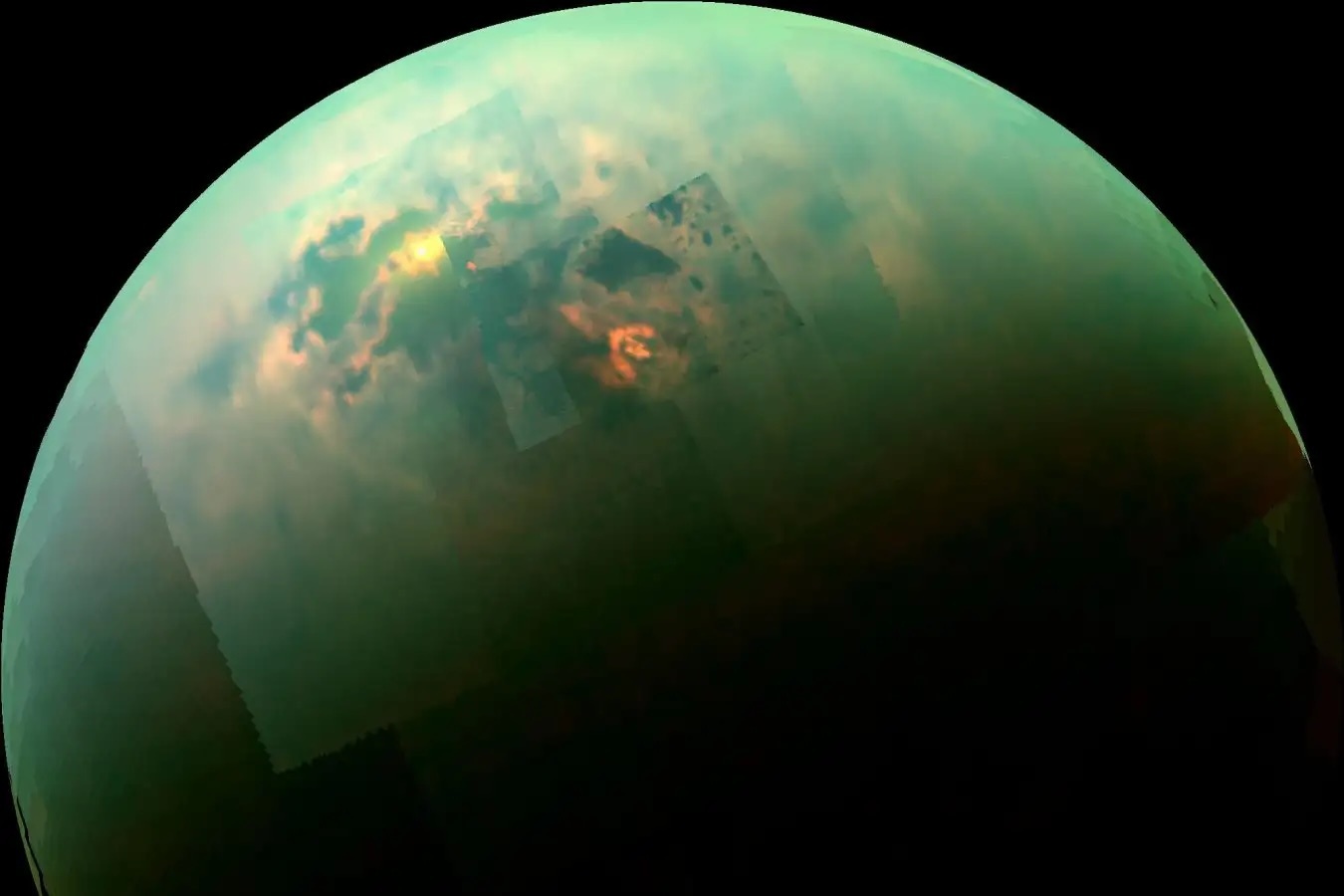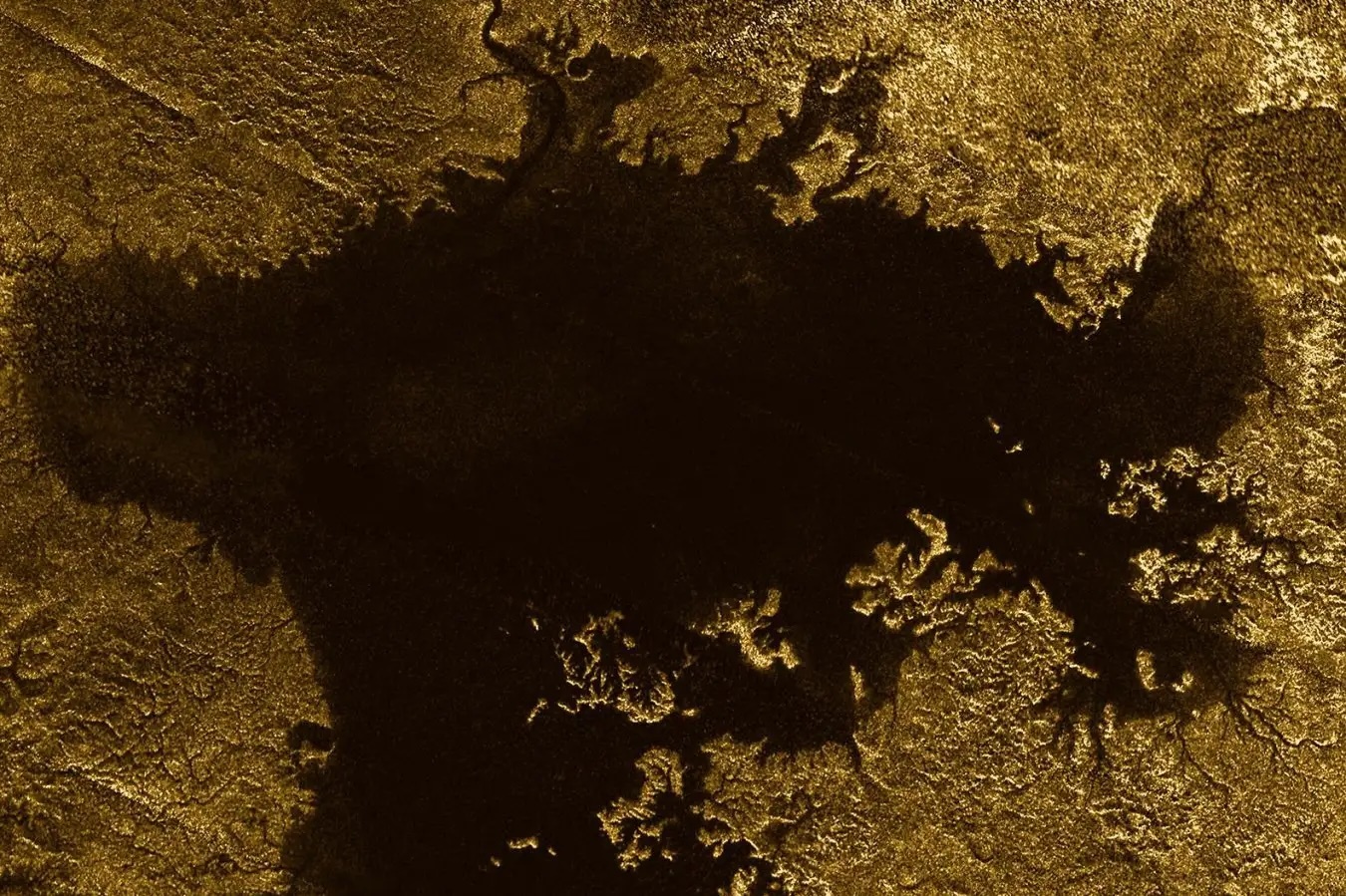21.06.2024
Saturn’s moon Titan has coastlines matching ones on Earth that have been carved by waves, hinting that Titan’s hydrocarbon seas and lakes also has them

The liquid hydrocarbon seas of Titan may have waves
NASA/JPL-Caltech/University of Arizona/University of Idaho
Craggy coastlines appear to have been carved out by waves around the methane seas and lakes of Saturn’s largest moon, Titan – and a NASA mission launching in 2028 could give us a closer look.
Titan is the only body in the solar system apart from Earth that has liquid on its surface, in the form of lakes and oceans made up of hydrocarbons like liquid methane, ethane and other organic molecules. Scientists think that winds in Titan’s thick nitrogen-rich atmosphere might produce rippling waves on these lakes, but these have never been directly observed because the moon’s atmosphere is too hazy to peer through.
Now, Rose Palermo at the US Geological Survey in Florida and her colleagues have found that the shape of Titan’s coastlines are best explained by the existence of waves on the ocean surface that have eroded them over time.
Palermo and her team looked at the coasts around Titan’s largest seas and lakes, like the Kraken Mare and Ligeia Mare, and compared them with coastlines on Earth whose origin we understand, such as Lake Rotoehu in New Zealand, which was initially made through flooding and later eroded from waves. They then created different simulations of Titan’s oceans, in which coastal erosion came from waves or just from dissolving at the edges.

Ligeia Mare on Saturn’s moon Titan, as seen by NASA’s Cassini spacecraft, has varying edges that may have been carved by waves
NASA/JPL-Caltech/ASI/Cornell
They found that the images of Titan’s coastline were best represented by the simulation with waves, and bore a resemblance to wave-eroded coastlines on Earth.
“Although it’s tentative, I find it very exciting,” says Ingo Mueller-Wodarg at Imperial College London. While we haven’t seen the waves themselves, this is very strong evidence that they exist, he says, and adds to a large body of indirect evidence, such as the presence of dune-like structures.
The only way to truly verify that waves are there would be to send a spacecraft to the surface, says Mueller-Wodarg, such as NASA’s planned Dragonfly drone mission due to launch in 2028.
Studying Titan’s coastline might also help us investigate how the first coasts on Earth formed, says Palermo. “Titan is a unique laboratory for coastal processes because it is untouched by people and plants. It’s really a place where we can investigate the coast as a physical process alone.”
Quelle: NewScientist
